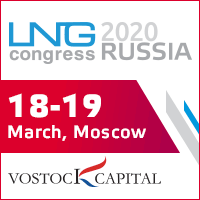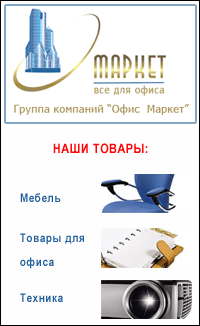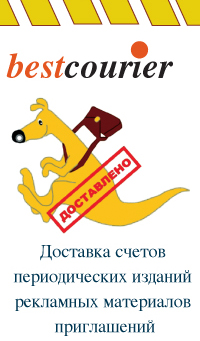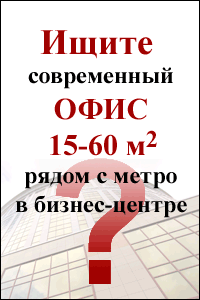Analysis of the causes of Strategy-2010’s partial successes and overwhelming failures after a decade of implementation

The term “Strategy-2010” was first introduced into Russia’s political science lexicon in the late 1990s, when the then little-known Putin after a successful ascent to the apex of the Russian political establishment in 1999 and full consolidation of all political powers as the new de-facto and de-juror head of state in 2000, gathered a group of leading Russian experts on economics and politics to find new mechanisms for fast-tracking national development. The coordination of this task was entrusted to the Center for Strategic Studies, which was specially set up for this purpose under the leadership of German Gref, the current president and CEO of Sberbank, who then in the early 2000s was one of the ‘rising stars’ of Russia’s new, post-Soviet economic philosophy.
The main objective of the strategy was to tap Russia’s leading experts’ brains and draw up a clear and realistic program of reforms of the country and its economy that would transform them from being a backward, lopsidedly raw-materials dependent state into a modern nation with a thriving, diversified free market economy. This program, developed after many brainstorming sessions among the experts that would later become known as ‘the young reformers,’ was approved by the government in 2000 as the official “Socio-Economic Development Strategy for Russia in 2000-10.” The program was to form a politico-economic basis that would enable Putin to create a stable environment for Russia’s long-term development after the chaotic 1990s.
Strategy-2010’s positive achievements
As this year marks the deadline set out in 2000 for the implementation of the strategy’s programs, its authors released a report during the conference, titled, “Strategy-2010: The Results of Implementation 10 years later,” which comprehensively evaluated the results of the policy’s implementation. One needs to give credit to the self-criticism and objectivity of the strategy authors for conceding that only three of the 10 key goals outlined in the policy were successfully implemented. In other words, the plan was fulfilled only by 30%. However, Gref was more generous in his assessment of the Strategy-2010 implementation, saying that 40% of the projected reforms were successfully executed. “The main result was that we had been able to accumulate huge intellectual potential, which when properly used, will enable Russia to move ahead.”
“One needs to give due credit to the self-criticism and objectivity of the strategy authors for conceding that only three of the 10 key goals outlined in the policy were successfully implemented In other words, the plan was fulfilled only by 30%.”
Some of the obvious successes, according to these experts, included a significant improvement in citizens’ living standards, illustrated by the sharp reduction in poverty from about 40% of the population in mid-1990s to a historic minimum of 13.1% in 2009, and country’s increased creditworthiness, thanks to a radical reduction of its external debts, from incredible heights of 140% of GDP in 1998 to a single digit of 8.5% of GDP in 2009. The main economic benefit of this achievement is that small debts make countries much more attractive to investors, and hence allows such states to obtain loans on foreign markets at comparatively low interest rates and other preferential terms.
The strategy’s other positive achievements were highlighted by Russian Finance Minister Alexei Kudrin, who in his speech stressed the fact that reforms executed within the strategy had helped turn Russia into an entirely new country with a ‘free market economy status’ and an investment rating from reputable international agencies. “We have over the past 10 years created a totally new country with a new economy, which had radically changed the conditions and opportunities in our country, created the base for stability that helped us weather the current crisis with minimal losses,” he added. Gref also shared the same view, noting that “the reforms that were successfully executed within the strategy had enabled the government to create a ‘safety margin’ that provided the country with an ‘anti-crisis shield,’ thus giving it a good chance to survive the crisis of 2008-09 much better than expected.”
Besides, the implementation of the strategy, according to Kudrin, also enabled Russia to achieve positive results in improving such important economic indicators that reflect the real state of citizens’ welfare such as the per capita GDP and purchasing power parity. For example, the per capita GDP during the period under review rose by over two times, from $7,800 in 2000 to $15,900 in 2008. Although, this figure, due to crisis, declined slightly to $14,900 in 2009, its double-digit growth, compared with 2000, is still more than evident. In addition, Russia was also on track towards achieving one of the strategy’s most ambitious goals of doubling the nation’s GDP by 2010, and would have certainly accomplished this stated mission, if not for the outbreak of the current global economic crisis in late 2008.
Strategy-2010’s failures
However, the policy’s few, though sparkling positive results were totally eclipsed by the massive scale of failures, as almost 70% of programs incorporated into strategy were not executed, or their implementations were stalled halfway. According to the conference participants, the zeal to execute reforms began to wane by 2004, and thereafter, their implementation became worse, primarily due to the lack of enthusiasm among those responsible for executing the laid-down policies.
One of the main reasons for these implementation failures, according to the conference participants, can be attributed to the high expectations and overestimation of forces and capabilities among the authors and executors of the programs. Expanding on this view, Gref even compared these policymakers with ‘romantic’ dreamers. “We can call the early part of this decade a romantic period, when the strategy authors thought that they would really be allowed to execute reforms in Russia and had big dream of transforming it from raw-materials-dependent country to an advanced modern nation.”
Paradoxically, Russia’s huge rapid economic growth over much of the last decade and the unprecedented ‘budgetary satiety,’ evident in record budget surpluses  caused by the influx of billions of the so-called ‘petrodollars’ generated from historically high energy prices, particularly, oil and gas, were devastating to the reforms. Explaining this point further, Sergei Sinelnikov-Murylev, the rector of the Russian Foreign Trade Academy and scientific head of the Institute for Economy in Transition, noted that the departure from political competition in the early 2000s and the onset of positive trends on the global energy and raw materials markets that were highly favorable to Russia played a huge negative role in the failure of reforms. “This is because the presence of lots of money in the economy does not only discourage reforms, but also removes the need and urgency to do so.”
caused by the influx of billions of the so-called ‘petrodollars’ generated from historically high energy prices, particularly, oil and gas, were devastating to the reforms. Explaining this point further, Sergei Sinelnikov-Murylev, the rector of the Russian Foreign Trade Academy and scientific head of the Institute for Economy in Transition, noted that the departure from political competition in the early 2000s and the onset of positive trends on the global energy and raw materials markets that were highly favorable to Russia played a huge negative role in the failure of reforms. “This is because the presence of lots of money in the economy does not only discourage reforms, but also removes the need and urgency to do so.”
In addition, the execution paces of reforms were uneven in several other areas, starting from the so-called natural monopolies, specifically, in the oil and gas industries, where almost nothing was done, to customs issues, where Russia instead of the projected progress even regressed in certain aspects, and ending with law enforcement, where most of the proposed reforms were practically left on paper. “Seen in this context, one can call Strategy-2010, just like several other similar initiatives, an uncompleted task,” Gref said.
Russia’s unsolved problems and new challenges
The strategy authors, who still believe the potential of their ‘brainchild pet project’ has yet to be fully tapped, have called on the government not ‘to reinvent’ a bicycle, but instead to simply return to a more precise, step-by-step implementation of the strategy, with one only key adjustment. In other words, the main emphasis this time around should be placed on complete demonopolization of political powers and a sweeping reform of the existing political system. “I recommend anyone asking him/herself the question of what needs to be done to accelerate Russia’s development to more closely get acquainted with this strategy and join in its realization,” Yevgeny Yasin, Russia’s former economics minister, and currently, the scientific director of the High School of Economics, noted. “Strategy-2010 is a good and very important program that is still relevant today. We just botched its implementation in the early 2000s.”
Other experts say equally extremely important is the need to create a system of institutions that will promote scientific innovations and complete diversification of the economy. One of these is the Skolkovo project, which is being designed to become the new center of innovations, a sort of Russia’s ‘Silicon Valley’ in the sphere of high technologies. But this will not be enough for achieving Russia’s dream of fast-track development, and consequently, all old and new technological parks, scientific research centers and institutes of the Academy of Sciences, should not only just generate innovative ideas, but also should be legally duty-bound to put them into industrial production and full commercialization. “We need to develop a strict macropolicy, or the right business climate, which can give opportunities to increase wealth, and foster normal competition, which will enable companies and industries survive and thrive only if they undergo innovation. These are the three key issues, whose importance we are only beginning to understand in Russia,” Kudrin said.
Besides, the experts see another inevitable condition for stable and consolidated development of Russia and its economy in a more clearly division of responsibilities in the economy between government and business, compared to the pre-crisis period, on one hand, and strict honoring of all obligations assumed by the parties before one another and the society, on the other. The problem, according to Kudrin, stems from the fact that Russia has yet to fully redistribute responsibilities between government and businesses, and between the federal government and the regions. “Many say that the current crisis has demonstrated the inefficiency of economy and market mechanisms, thus forcing the state to help bailout businesses at the peak of the crisis. But the crisis has also showed the ineffective role of the state as a regulator of the financial markets.”
In practice, this indistinctive division of labor leads to shifting blames and responsibilities among participants of the economic processes. “For example, politicians blaming greedy bankers, who chase profits by all means and at any price, for starting the crisis. But government regulators also did not do a better job either, because it was its direct responsibility as a regulator to anticipate and foresee the sprouts of crisis, and then take adequate measures, including adopting new tools, if necessary, as a response to and regulation of the financial markets in particular and the entire economy as a whole,” Kudrin added.
Today, Russia’s sustained rate of development in the post-crisis period, according to the strategy authors, demands a comprehensive and real reform of the entire political system, starting with the so-called ‘political power vertical’ to the establishment of normal conditions not only to foster, but also to enhance real development of pluralism of opinions and genuine political competition among all the participants of democratic processes in the country.
“Russia was on track towards achieving one of the strategy’s most ambitious goals of doubling the nation’s GDP by 2010, and would have certainly accomplished its stated mission, if not for the outbreak of the current crisis in late 2008.”
Further highlighting this issue, Gref called the immaturity of Russia’s current institutional environment and presence of ‘easy petrodollars windfall’ from the export of raw natural resources the ‘main inhibitors’ of reforms. “Our reformative capability proportionally weakened with the increase in size of the Stabilization Fund and budget surpluses as the accumulation of financial resources led to a deviation from the intended direction of strategic reforms,” he said. “With time, these deviations grew to a critical mass and this ushered in non-competitiveness that finally undermined the intended reforms. This was not only true about the leaders, but also with the public demand for reforms.”
Besides, Gref also noted that the current crisis has given Russia a unique opportunity to start a new stage of reforms that are strongly needed in the country, especially today when the conditions are very ripe to do so. The main objectives of such reforms should be the maximum diversification of assets and economy, minimum of government’s presence in business ownerships and real promotion of competition, including in the political sphere. “The main priorities today should be the reformation of government and education so to create a new class of elite managers capable of furthering reforms,” Gref said. “Specifically, the main focus of efforts should be on education. This is particularly important, because the stereotypic opinion that our educational system is the best in the world, is unfortunately, now a myth, as the traditionally high quality of our education — from the secondary to the university levels — has been completely lost. This is why an educational reform means a reform of our entire future.”
This underscores the main lesson to be learnt from strategy’s implementation, if one takes into consideration both the events of the past decade and those happening in the country today, especially those outlined in the ‘Strategy-2020,’ another ambitious program drawn up for the Medvedev-Putin tandem. And, this lesson is most reforms succeed only when there is public demand for a change, along with a strong political will, overwhelming support for the proposed reforms, not only from above, but also from the grassroots level, as well as the presence of a strong leader and like-minded people that are willing to devotedly execute the projected reforms, based on the country's traditions and new realities. “If at least one of these basic conditions is missing, reforms will never be executed, or if still started, their implementations will never reach conclusions,” Gref added.
According to observers, such a comprehensive analysis of the causes of successes and failures of Strategy-2010 is very important today so as to better prepare the country as a whole and its political leadership in particular to be more effective in solving the problems facing the country today. These include all the unresolved issues in the Strategy-2010 as well as the new challenges defined in the equally ambitious Strategy-2020 for the Medvedev-Putin diarchy.












 Web design,
Web design,